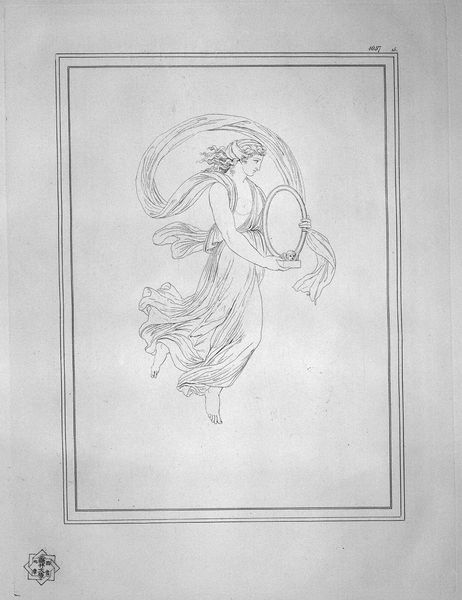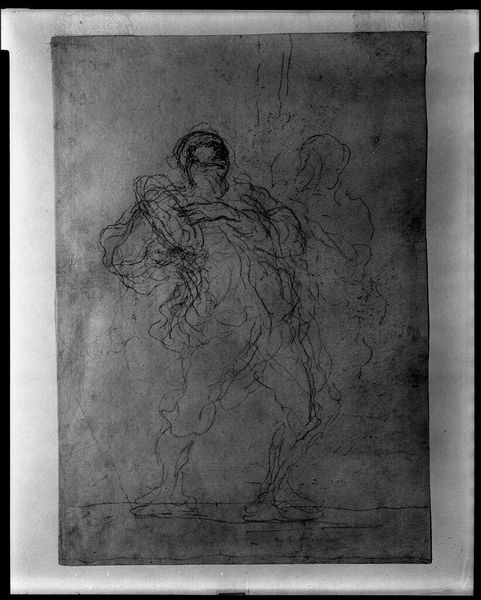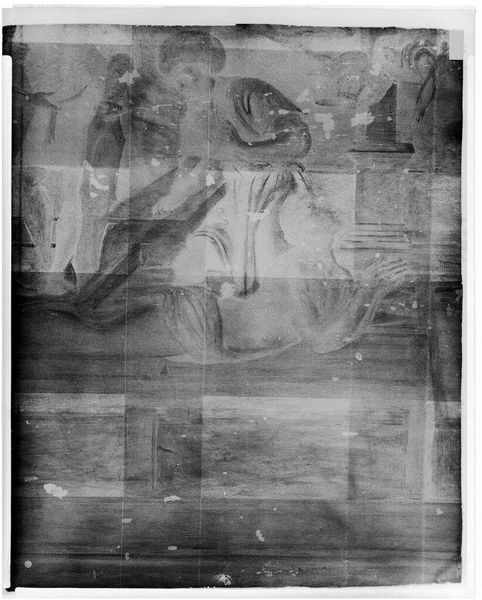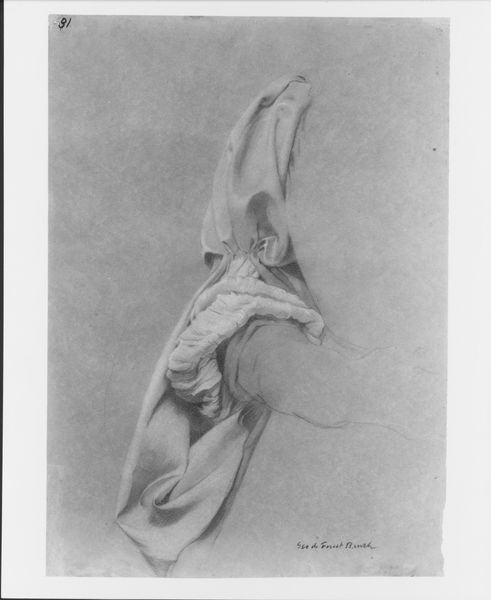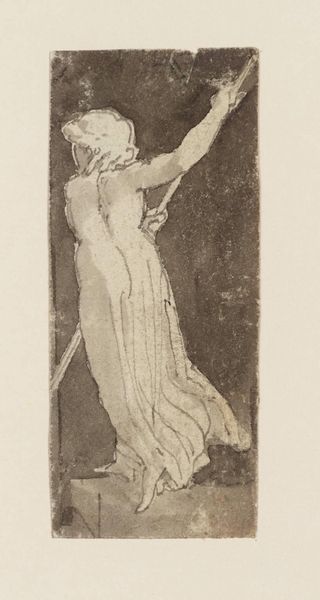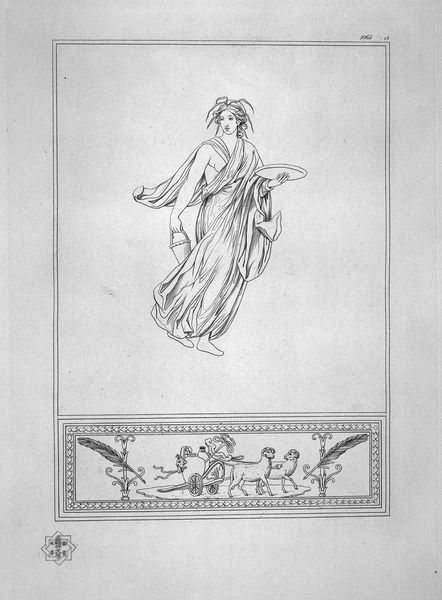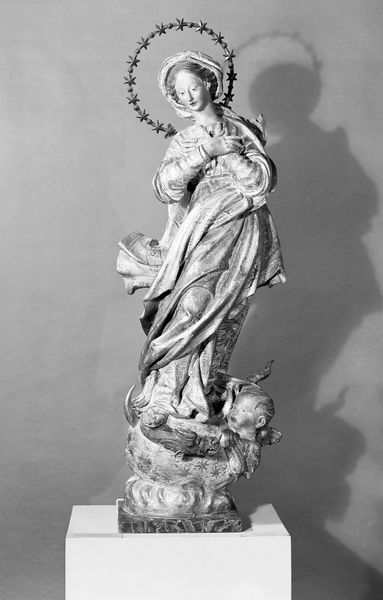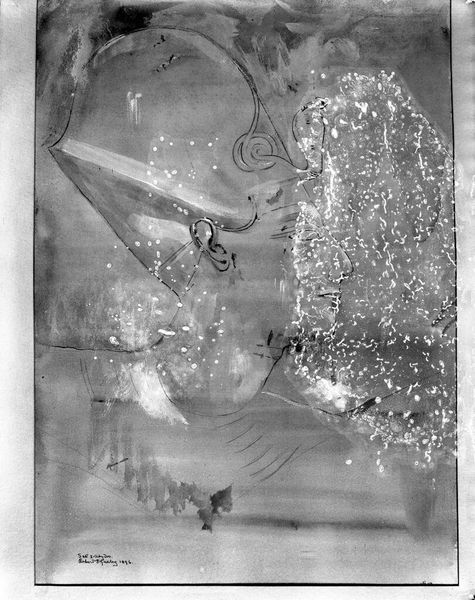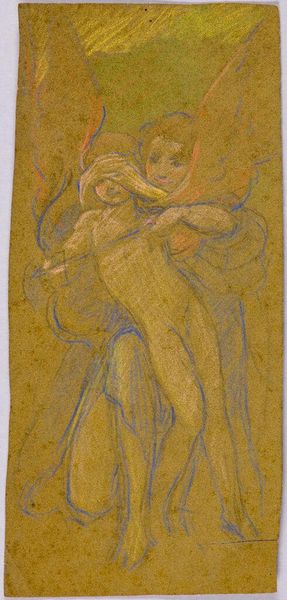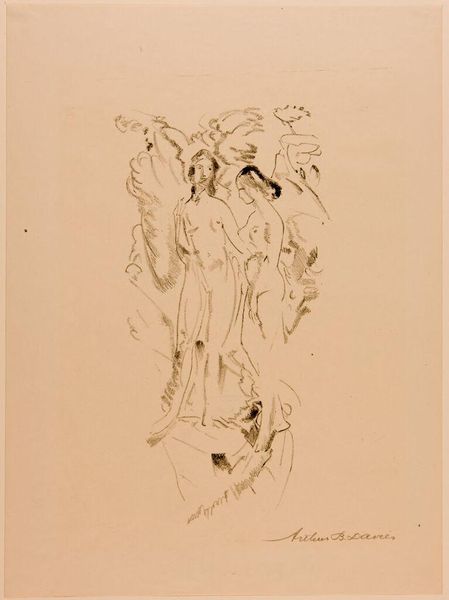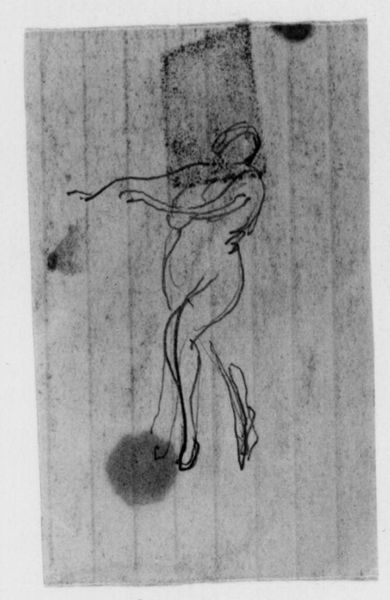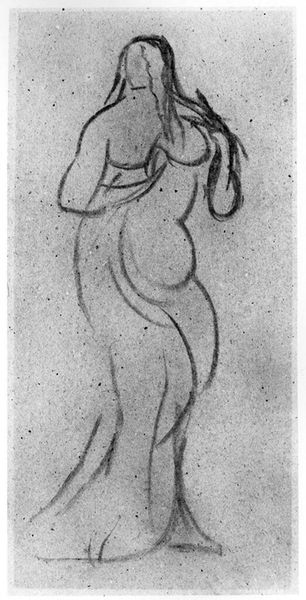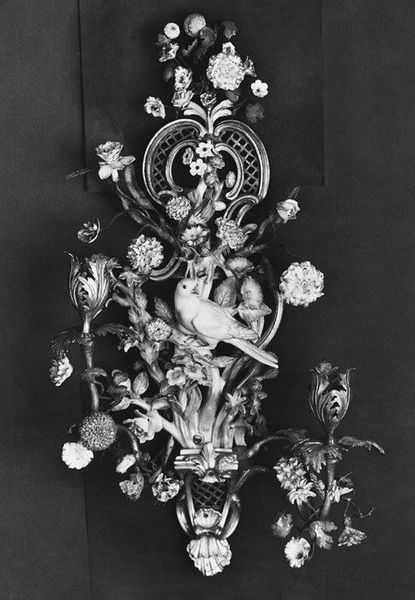
drawing, panel, sculpture
#
portrait
#
drawing
#
neoclacissism
#
panel
#
allegory
#
sculpture
#
figuration
#
black and white theme
#
sculpture
#
carved
#
history-painting
#
decorative-art
Dimensions: H. 13 x W. 9 1/2 inches (sight) (33.0 x 24.1 cm)
Copyright: Public Domain
Curator: Standing before us, we have an early 19th-century carved panel, likely crafted between 1800 and 1815. Editor: It gives me a sense of lightness, almost ethereal, because the figure stands out so starkly against the dark background. Curator: Indeed. It's a quintessential piece echoing the Neoclassical period. Though we don’t know definitively who created this panel, or for what commission it was intended, the Met houses it today. Neoclassicism drew heavily from the art and culture of ancient Greece and Rome, as seen here. Editor: Definitely. Look at her robe, her hair. The floating fabric emphasizes the timeless grace idealized during that period, doesn't it? She almost looks like a representation of classical virtues. But what's the symbol she's carrying? Curator: It's a sundial, held delicately. The allegorical female figure along with the dial possibly allude to an interest in the passage of time during the Neoclassical Era. The Neoclassical fascination with the forms of classical antiquity provided a potent visual language for expressing ideas about order, reason, and beauty, so sought after at the time. Editor: Right. Time was represented allegorically often, but to see it combined here with such obvious neoclassical features gives me a fresh sense of it. This representation is meant to elevate concepts to a grand scale. The symbolism ties directly to Neoclassical ideas. It also adds a layer of melancholic contemplation. Time passing, beauty fading. It's all very Romantic in a subdued, classical way. Curator: Well put. The panel served likely some decorative function within an aristocratic household or estate. Images like these functioned to reinforce values. A sort of "noble" restraint in thinking about time. Editor: Seeing it here does make me wonder what stories it could tell about those who once owned it. Symbols do whisper across centuries. Curator: And the historical weight that images like this bear allows us to see beyond the forms of the time period and straight into the sociopolitical intentions. Editor: Precisely. Considering those earlier associations and uses of classical allegory give these carved images unexpected power even now.
Comments
No comments
Be the first to comment and join the conversation on the ultimate creative platform.
